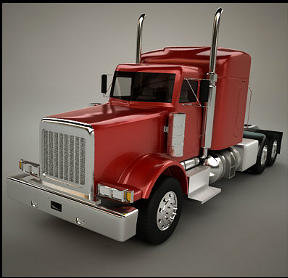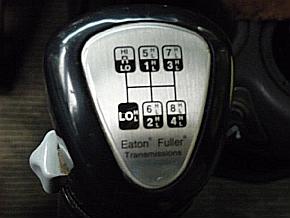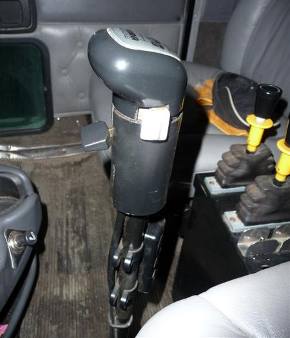An Intro To Big Trucks And Truck Driving School Part I
-
Blogs By Author
-
Blogs By Tag
I decided that it would be really handy to have a larger truck around. The problem is that once you get either air-brakes, or a gross vehicle weight rating (GVWR) of over 26,000 pounds, you need a commercial driver's license (CDL). That's the reason you see so many 26,000 GVW single-rear-axle trucks with "air-over-hydraulic" brakes – they are right at the maximum with no CDL required.
Signing Up For Truck Driving School

My timing was bad – starting at the beginning of 2009, it became necessary for new truck-drivers to have formal training prior to testing for their CDL. For a class-A license, which you need to have for a full size truck pulling a trailer, the formal training requirement is 160 hours. Now, many retired folks might choose a four-week vacation somewhere, but I thought this would be an equally interesting, and way more useful way to spend a month, so I signed up at North Cross Commercial Driving School, about twenty miles north of where I live.
If driving a truck has ever crossed your mind, or you just like the looks of that Kenworth, Freightliner, or Peterbilt going by, maybe you would enjoy reading a little more about the trucks and driver training experience, so here goes…
Heavy-Truck Anatomy
The typical semi-truck configuration has a "tractor" with a single "steer axle" in the front, combined with two "drive axles" in the rear, and a "fifth wheel" that is used to connect to the trailer. Under the hood, you will typically find a Caterpillar or Cummins turbo-charged diesel motor, usually having six big cylinders. These motors range from about three-hundred to six-hundred horsepower in typical configurations. The RPMs are generally kept in the 1000 to 2200 range, where the motors generate in the range of 1000 ft-lbs of torque. Fuel mileage for these rigs is typically about six MPG.
Behind the engine is normally a manual transmission, but with some of the newer trucks, automatics are becoming more common. The automatics are really manual transmissions that are shifted for the driver via solenoids and computer control. The most common manual transmission for many years has been the Eaton-Fuller "Road Ranger." This comes in several configurations. The most basic is a nine or ten speed. This transmission has two ranges, so you go through the gears in low range, and then, with a switch on the front of the gear knob, you change to high range, and go through the gear sequence again. The next step up is the 13-speed. This has a "splitter" so that you can also have a high and low speed in each gear. The 13-speed allows the splitter to be used on the gears while in high range. An 18-speed is the same, but allows the splitter to be used in all gears - high and low range. The splitter is controlled by a second switch on the side of the shift knob. It's typically red for a 13-speed, and gray for an 18-speed, and of course not there at all with a nine or ten speed which only has the range switch. These transmissions have NO synchromesh.


The clutch is different than on a car. Since there is no synchromesh, you are double-clutching every shift – both up and down. Some old-time drivers don't use the clutch except when first taking off, but most mechanics (and the manufacturers of the transmissions) agree that this is tougher on transmissions and don't recommend using this practice. The clutch disengages just a couple inches from the top of the pedal travel, so that is all the movement that is necessary for the many-many clutch presses that you routinely do. In fact, that's ALL the travel you want to routinely use. If you press the pedal all the way down, it engages a brake on the input shaft of the transmission. This brake is necessary when you are stopped and want to put it into gear. The gears are so heavy, and with no synchromesh to help, without the brake you would be waiting a very long time to shift into gear when stopped. If you push all the way to the floor while normally shifting, you wear out that brake.
The rear axles aren't unlike normal car axles, only much heavier duty. There is a lock mechanism that you control from in the cab that will connect both rear axles together so that they are both driving, otherwise just the front axle is driving. Some trucks go further and also allow you to lock both wheels on the same axle together. Some trucks have "drop" or "tag" axles that are moved into contact with the road while carrying maximum sized loads. This increases the carrying capacity of the truck.
The brakes on the typical semi are huge drum brakes. We're talking five, six inches wide, and with almost half an inch of lining. They have a slot, so that from under the truck you can look and see how much lining you have without taking off the drums. Some truckers remove the entire backing plate so you can quickly check the brakes. The brakes are controlled by air. A compressor in the truck keeps tanks filled with 100-125 PSI of air. This pressure is applied to the brakes via valves operated by the brake pedal to make the brakes actuate. Trucks also have "spring brakes" that cause the brakes to come on when parked or if you ever lose air pressure (e.g., the trailer becomes separated from the tractor or an air line breaks). When you release the park brakes, air is applied to a cylinder to override very strong springs (about 3000 lbs) that keep the brakes locked without this pressure applied. The loud "Shhhhhhh" that you hear when trucks park is the pressure being released from these chambers.
Related Articles:







 TT On Facebook
TT On Facebook